The harmonious blend of simplicity and functionality has turned Japandi kitchens into a leading design trend. Rooted in the fusion of Japanese minimalism and Scandinavian warmth, this style creates a serene yet practical cooking space. With its focus on clean lines, natural materials, and clutter-free aesthetics, a Japandi-inspired kitchen promotes tranquility while maximizing usability. As modern lifestyles prioritize mindful living, this design approach offers a perfect escape from the chaos of everyday life. Whether you’re revamping your space or starting fresh, Japandi kitchens provide an opportunity to balance elegance with comfort. Dive into these inspiring ideas to transform your kitchen effortlessly.
Minimalist White Oak Cabinets with Matte Black Pulls
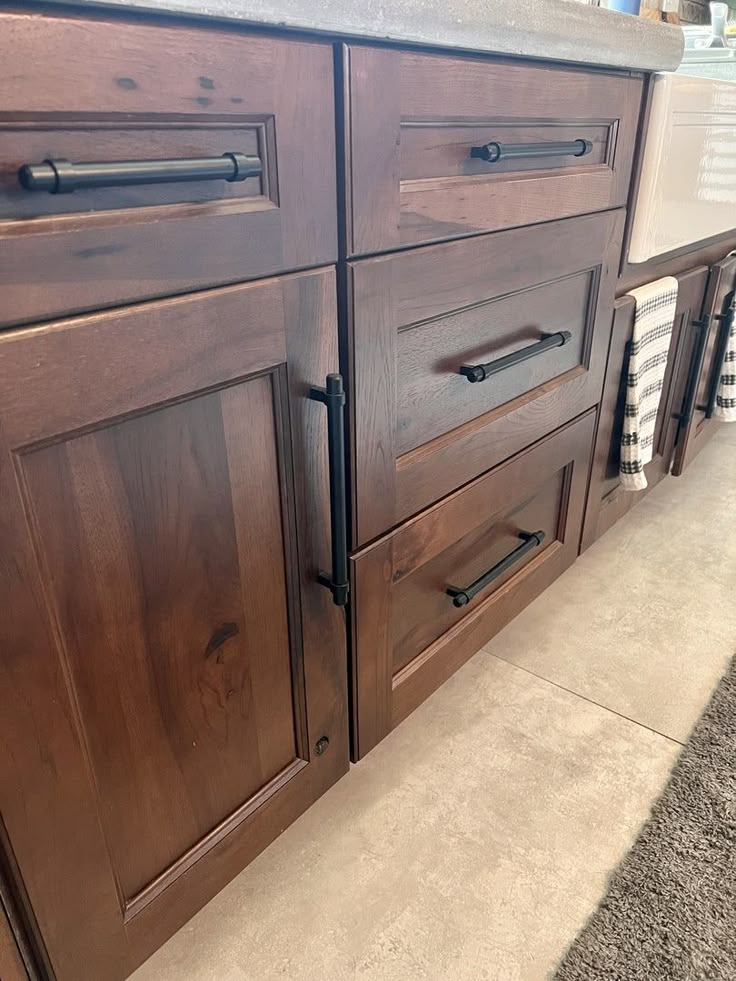
The striking contrast between white oak and matte black hardware adds depth to kitchen spaces while maintaining a clean, minimalist aesthetic. White oak cabinetry provides natural warmth, showcasing its subtle grain patterns, which balance the sharp, modern lines created by black pulls. This combination blends organic and industrial elements seamlessly, making it versatile for various design styles, including Japandi. Opting for flat-front cabinet doors enhances the understated elegance, allowing the materials and finishes to stand out. The black hardware also resists fingerprints, making it practical for daily use. Pair these cabinets with neutral countertops and soft lighting to create a harmonious environment. Introducing these finishes alongside other natural textures, like linen window treatments or woven decor, amplifies the cohesive design narrative.
Integrated Seating on Kitchen Island with Curved Edges

Seating integrated directly into a kitchen island fosters a welcoming and functional space. By curving the edges of the island, the design ensures safety and softness, ideal for high-traffic areas. Rounded seating corners encourage natural interaction, blending utility with elegance. The integration works best when the materials align with the rest of the kitchen design—light wood paired with smooth quartz or stone finishes maintains visual cohesion. Seating can be upholstered in neutral tones, keeping with the Japandi style’s calm aesthetic. Adding low-profile cushions in muted beige or grey further softens the look while offering comfort. This design eliminates the need for additional bulky furniture, making it a space-saving solution for compact kitchens. Under-seat storage can also be added for extra functionality.
Seamless Cabinetry with Hidden Push-to-Open Mechanisms

Push-to-open cabinetry eliminates the need for visible hardware, streamlining the kitchen’s appearance. The absence of handles keeps surfaces smooth and uninterrupted, emphasizing clean lines essential in Japandi kitchens. Hidden mechanisms work particularly well with flat-panel cabinets, allowing the focus to remain on the material’s natural texture. White oak or matte-finished wood achieves a soft, organic look, while durable mechanisms ensure longevity. This feature suits upper and lower cabinetry equally, enhancing accessibility while maintaining minimalism. Hidden cabinets also allow flexibility in integrating appliances without disrupting visual flow. Incorporating soft-close hinges complements the serene kitchen atmosphere by reducing noise. Pairing these cabinets with natural stone countertops and textured backsplashes ensures balance between sleek and earthy elements.
Textured Neutral Backsplash with Warm Beige Tones
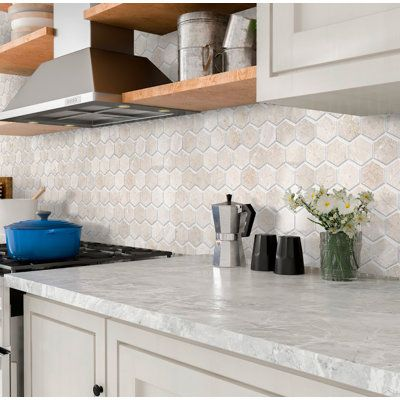
Warm beige tones in a textured backsplash create a subtle focal point that complements the Japandi aesthetic. Materials such as handmade ceramic tiles, honed travertine, or tumbled stone add depth while maintaining a soothing neutrality. The slight variations in texture reflect natural imperfection, a hallmark of Japandi design. These tones work harmoniously with light wood cabinetry, offering a seamless transition between surfaces. Consider using grout in complementary shades to avoid harsh contrasts and retain the backsplash’s understated elegance. When paired with matte finishes on cabinets or countertops, the backsplash provides visual interest without overwhelming the space. To complete the look, position soft under-cabinet lighting to accentuate the textures and warmth of the backsplash, enhancing the kitchen’s cozy, tranquil vibe.
Open Wooden Shelving with Soft LED Backlighting
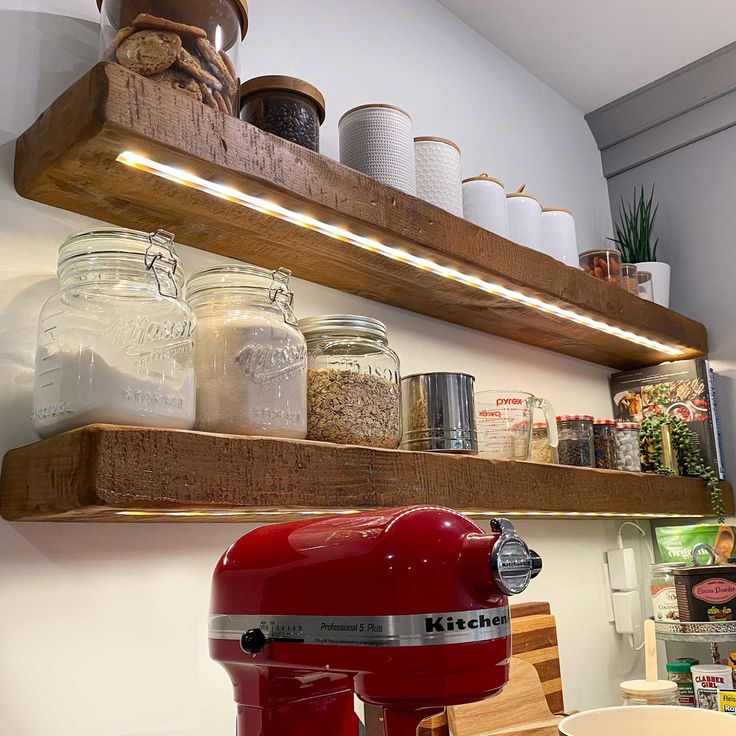
Open shelving crafted from natural wood offers both utility and aesthetic appeal. When enhanced with soft LED backlighting, the shelves gain dimension, creating a visually layered effect. These shelves are ideal for displaying functional items like ceramic bowls, glassware, or neutral-toned dinnerware, aligning with the minimalist and functional principles of Japandi design. LED backlighting can be adjusted to emit a warm glow, emphasizing the organic texture of the wood while adding subtle ambiance to the kitchen. The shelving pairs beautifully with light oak or ash finishes, creating continuity in material choices. To keep the design practical, incorporate thoughtful spacing and avoid overcrowding the shelves. This combination balances style and simplicity, elevating the space without compromising its airy feel.
Matte Charcoal Accent Wall with Light Wood Cabinets
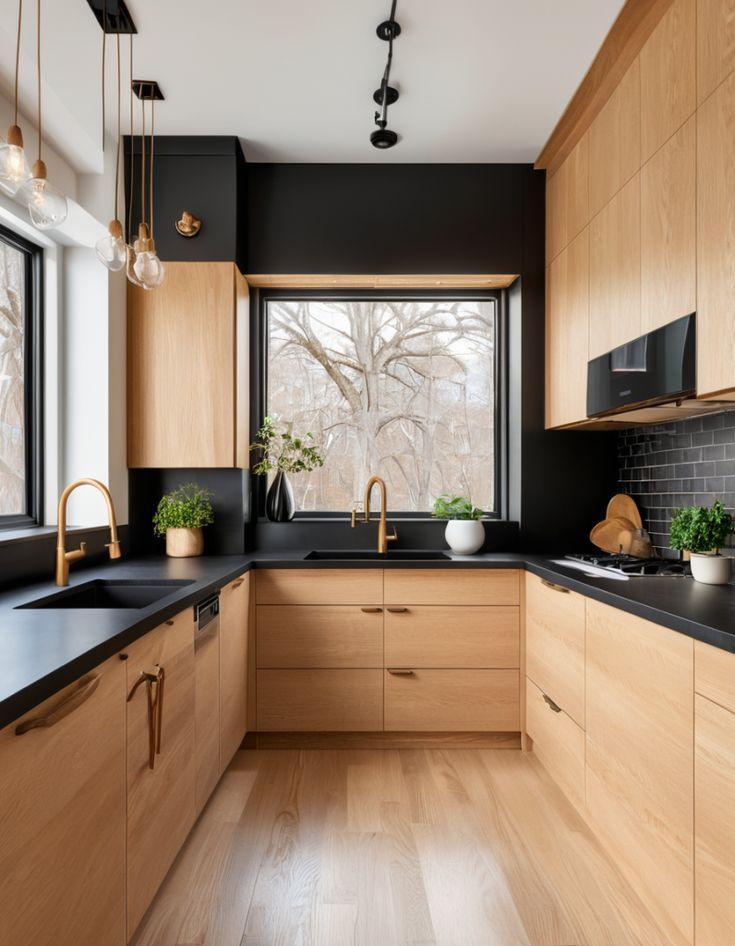
A matte charcoal accent wall introduces depth and contrast, enriching the overall look of a Japandi-inspired kitchen. When paired with light wood cabinetry, the dark wall creates a striking yet balanced composition. The matte finish absorbs light softly, preventing glare and maintaining a calm atmosphere. Using this bold element strategically—such as behind open shelving or as a backsplash extension—keeps it from overwhelming the space. The light wood tones of the cabinetry counteract the darker wall, preserving the room’s brightness and warmth. To complete the design, incorporate accents like natural woven textures or earthy ceramics to bridge the contrast between the wall and cabinets. This pairing emphasizes balance, a key principle of Japandi design.
Shallow Drawer Organization with Bamboo Inserts
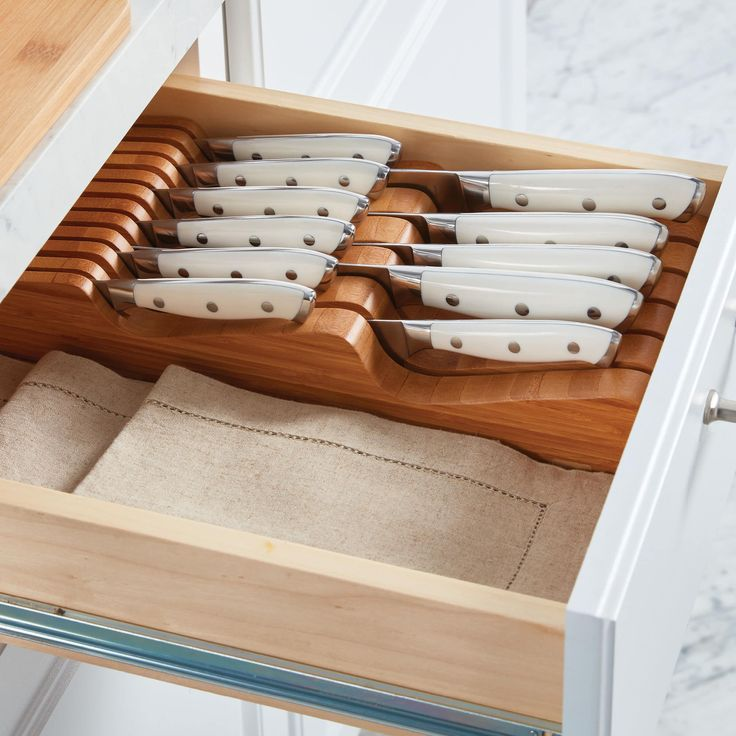
Bamboo inserts for shallow drawers offer an eco-friendly solution to maintaining order in the kitchen. These inserts align perfectly with Japandi’s emphasis on functionality and natural materials. Ideal for storing utensils, spices, or kitchen gadgets, bamboo dividers ensure that every item has its designated space, reducing clutter. Their light wood tone complements white oak cabinets or neutral kitchen finishes, seamlessly blending into the overall aesthetic. Opt for customizable inserts that can be rearranged to suit specific needs, enhancing practicality. The smooth finish of bamboo makes cleaning effortless while adding a touch of refinement. Pair these inserts with soft-close drawers to enhance the overall experience of a quiet, efficient kitchen space, perfectly aligned with Japandi design principles.
Rounded Corners on Cabinetry and Countertops
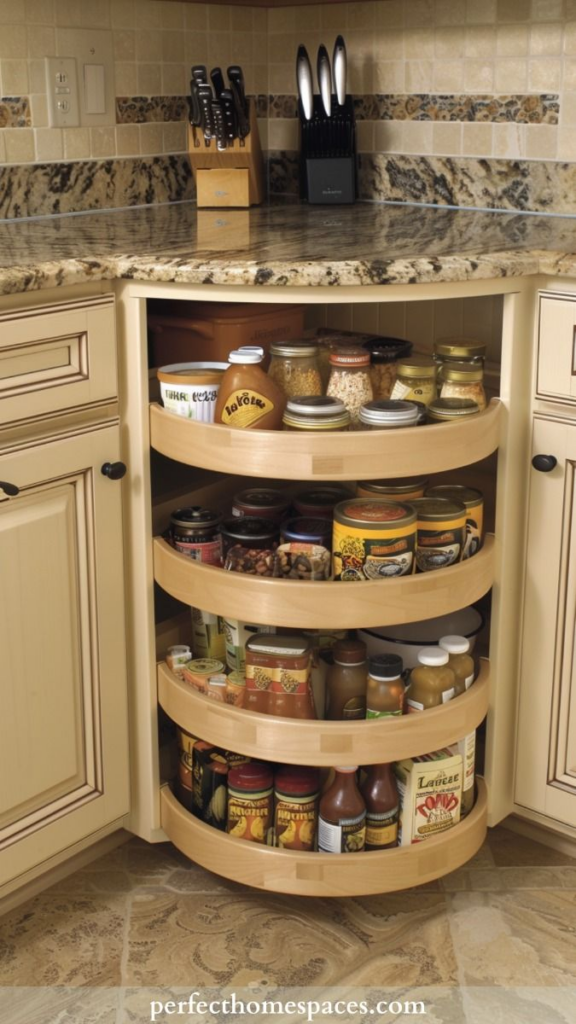
Softly rounded corners on cabinetry and countertops enhance safety and fluidity in a kitchen design. This subtle detail eliminates sharp edges, making the space feel approachable and harmonious—an essential feature of Japandi interiors. Rounded cabinetry edges soften the overall look, especially when paired with light wood tones and matte finishes. Countertops with curved edges in materials like quartz or natural stone reinforce the organic design approach. This feature is especially valuable in family kitchens or compact spaces, where sharp angles may interrupt movement. Rounded designs work well with curved seating or pendant lights to create a cohesive, flowing aesthetic. Combining these elements results in a kitchen environment that feels both modern and serene.
Large-Scale Ceramic Tiles in Neutral Tones
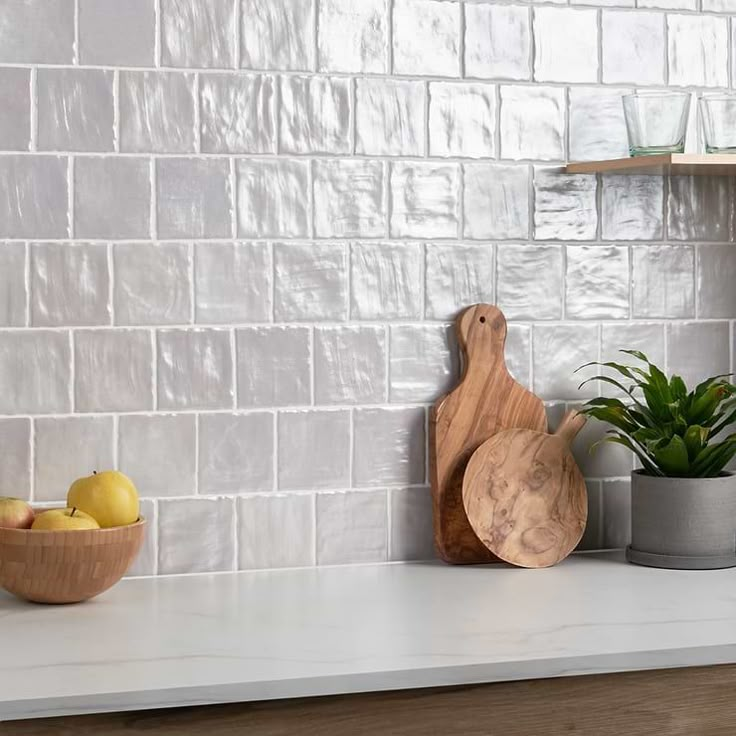
Using large-scale ceramic tiles in neutral tones helps create a seamless and spacious feel in Japandi-inspired kitchens. These tiles minimize grout lines, resulting in a cleaner, uninterrupted surface that enhances the minimalist aesthetic. Neutral tones such as beige, soft gray, or taupe add warmth and complement natural wood cabinetry. Opt for matte finishes to maintain a subtle and understated elegance. These tiles work well for both flooring and backsplashes, providing versatility in design. Large tiles also make small spaces appear larger by reducing visual clutter. Pair them with natural textures like wooden countertops or linen window treatments to add depth. The neutral color palette ensures harmony across the kitchen while allowing other design elements to stand out.
Built-In Herb Planters in Countertops
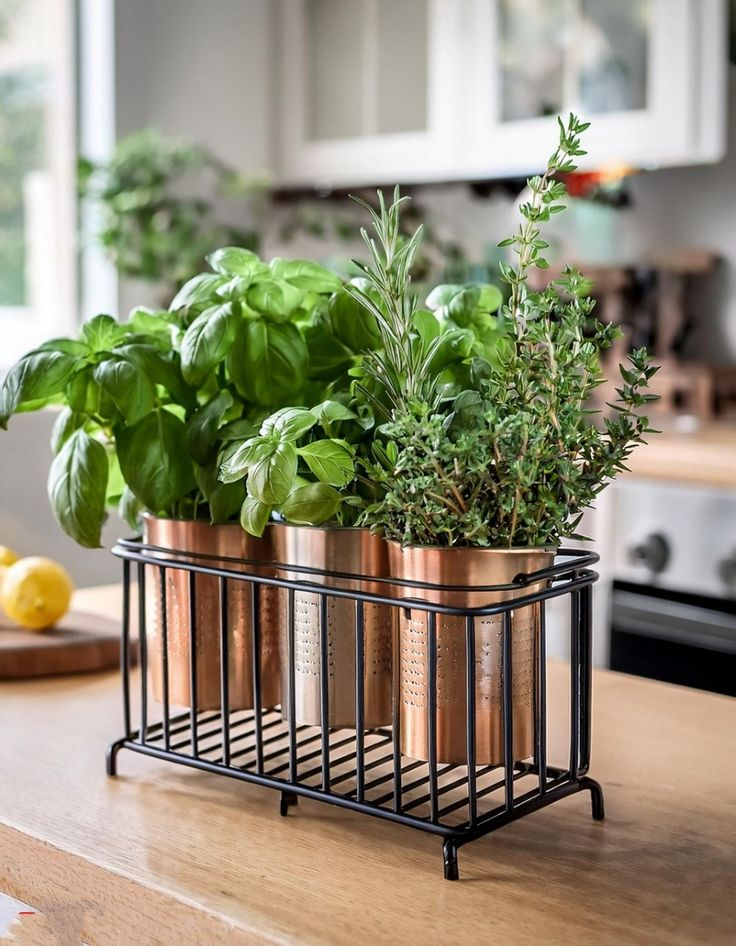
Incorporating built-in herb planters into countertops combines functionality with a touch of nature, perfectly aligning with Japandi’s connection to the natural world. These planters can be integrated near the sink or prep area, making fresh herbs easily accessible for cooking. Materials such as stainless steel or stone edges around the planter ensure durability and seamless integration with the countertop. Choose low-maintenance herbs like basil, thyme, or mint for a practical and aesthetic addition. This feature not only saves space but also adds greenery to the kitchen, enhancing its serene and organic feel. To complete the look, pair the planters with neutral-colored countertops and wood cabinetry, creating a harmonious balance between modern functionality and natural beauty.
Contrasting Open and Closed Storage
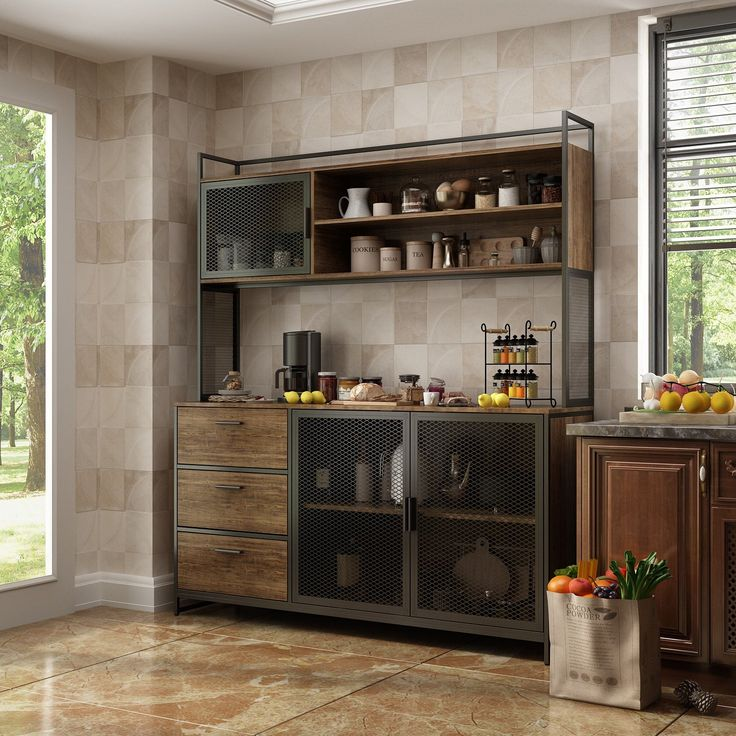
Balancing open shelving with closed cabinetry creates visual interest while maintaining functionality. Open storage allows frequently used items or decor, like neutral ceramics and wooden bowls, to become part of the design. In contrast, closed cabinets help conceal clutter, keeping the space organized. Combining light wood for open shelving with white or matte cabinetry creates a pleasing contrast that feels natural and balanced in a Japandi kitchen. The strategic placement of open shelves above workspaces ensures accessibility without overwhelming the design. Incorporating LED lighting in open sections highlights textures and adds depth. This thoughtful mix of storage solutions blends practicality with aesthetic harmony, embodying the balance central to Japandi interiors.
Natural Linen Roman Shades for Windows
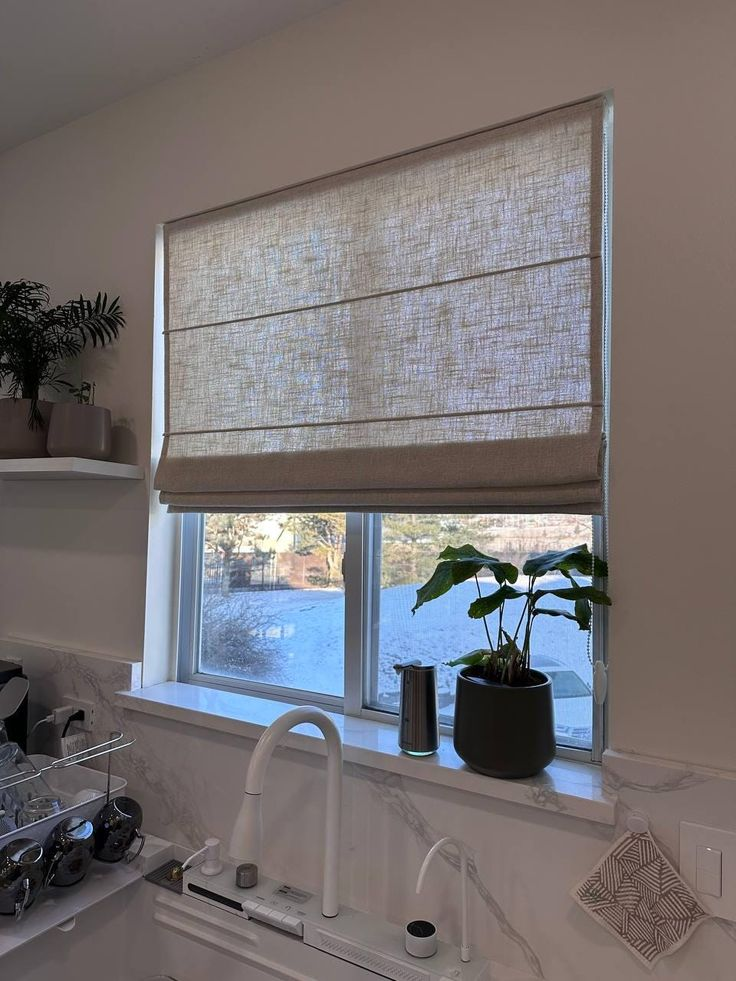
Natural linen Roman shades offer an understated way to control light while adding warmth and texture to a Japandi kitchen. The soft, woven material filters sunlight, creating a calm and inviting atmosphere. Neutral tones like beige, cream, or light gray complement wooden cabinetry and natural stone countertops, blending seamlessly into the design. Linen’s organic texture aligns with Japandi’s emphasis on natural materials and minimalism. Roman shades are easy to operate and ideal for maintaining clean lines around windows, avoiding the bulk of traditional curtains. To enhance functionality, consider shades with blackout liners for added light control. Their subtle elegance pairs beautifully with other natural elements in the kitchen, creating a cohesive and tranquil space.
Matte Clay Pendant Lights Over Dining Areas

Pendant lights in matte clay finishes bring a sculptural and earthy quality to dining areas within Japandi kitchens. The muted tones of clay—ranging from warm terracotta to soft beige—blend effortlessly with natural wood and neutral backdrops. These lights create a focal point without overpowering the minimalist aesthetic. Suspended over a dining table or island, their soft, downward glow adds warmth and intimacy. The matte texture of the clay complements Japandi’s preference for organic, tactile materials. Grouping multiple pendants at varying heights can add subtle visual interest, while ensuring the overall design remains understated. Paired with wooden furniture or stone finishes, these pendant lights enhance the kitchen’s balance of natural elegance and functionality.
Two-Toned Cabinetry in Muted Natural Colors
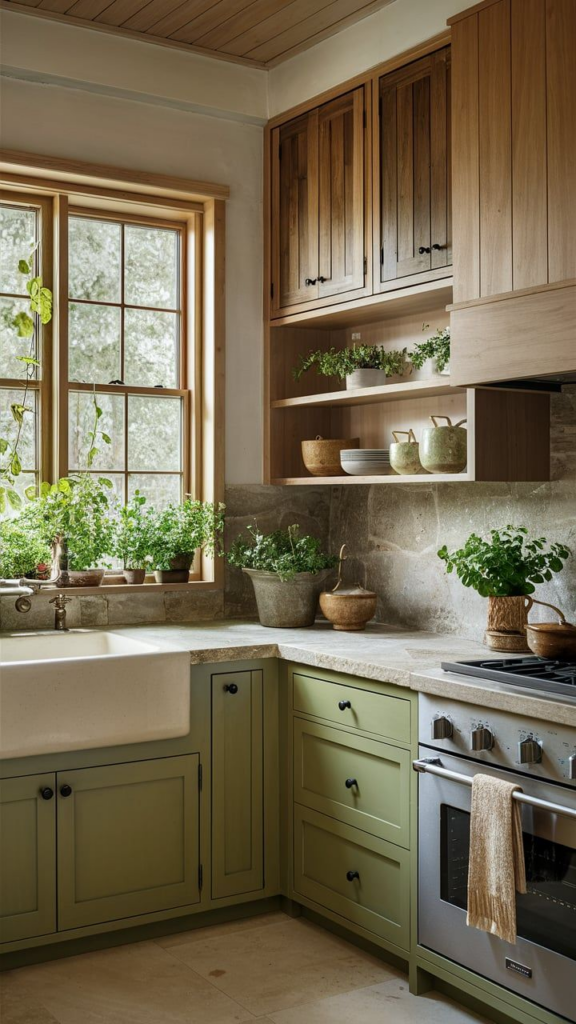
Pairing two-toned cabinetry in muted natural colors introduces subtle contrast while maintaining a cohesive look in a Japandi kitchen. Opt for upper cabinets in soft hues like beige or light gray and base cabinets in warm wood tones such as white oak. This combination grounds the design while adding visual interest without overpowering the minimalist aesthetic. The muted palette ensures harmony, allowing other elements like textured backsplashes or pendant lighting to shine. To tie the look together, choose matte finishes and minimal hardware, such as push-to-open mechanisms or slim black pulls. The result is a balanced, functional, and visually engaging design that embodies the Japandi principle of understated elegance and functionality.
Hidden Appliances with Paneling in Natural Wood
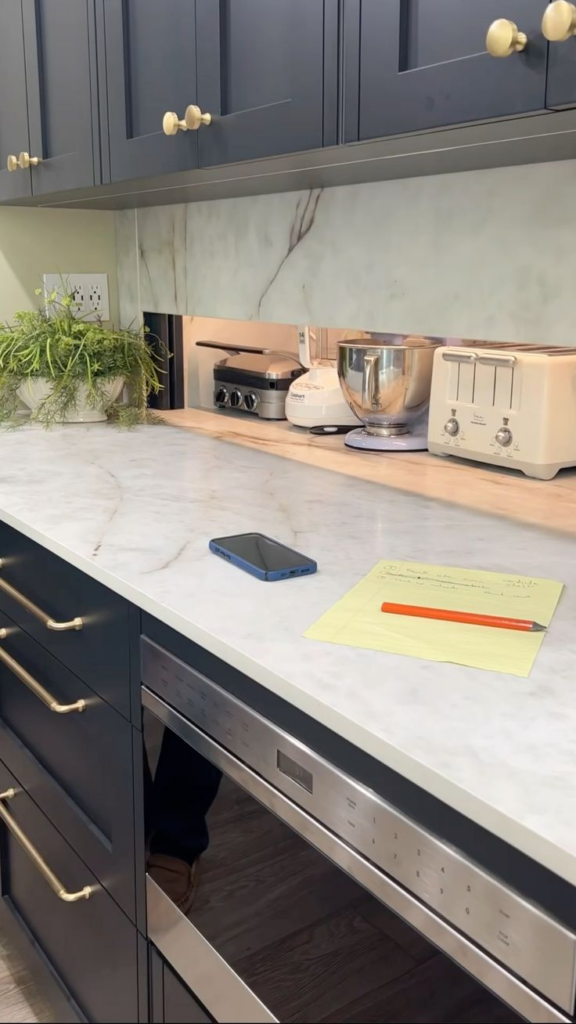
Disguising appliances behind natural wood paneling enhances the clean, uninterrupted look of a Japandi kitchen. This approach ensures that essential appliances like refrigerators and dishwashers blend seamlessly into the cabinetry, maintaining the minimalist aesthetic. The use of light wood tones such as white oak adds warmth and texture, aligning with the Japandi preference for organic materials. Soft-close mechanisms and integrated handles further emphasize simplicity and functionality. To ensure durability, choose high-quality paneling that matches the surrounding cabinetry. This design choice allows the kitchen to feel open and uncluttered while maximizing practicality. Complement the concealed appliances with visible natural accents, such as stone countertops or linen window treatments, to create a harmonious space.
